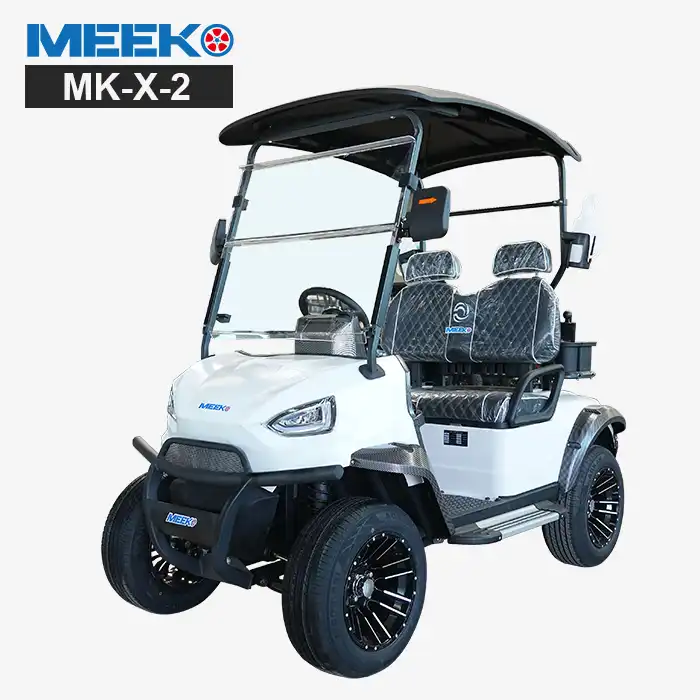- English
- French
- German
- Portuguese
- Spanish
- Russian
- Japanese
- Korean
- Arabic
- Greek
- German
- Turkish
- Italian
- Danish
- Romanian
- Indonesian
- Czech
- Afrikaans
- Swedish
- Polish
- Basque
- Catalan
- Esperanto
- Hindi
- Lao
- Albanian
- Amharic
- Armenian
- Azerbaijani
- Belarusian
- Bengali
- Bosnian
- Bulgarian
- Cebuano
- Chichewa
- Corsican
- Croatian
- Dutch
- Estonian
- Filipino
- Finnish
- Frisian
- Galician
- Georgian
- Gujarati
- Haitian
- Hausa
- Hawaiian
- Hebrew
- Hmong
- Hungarian
- Icelandic
- Igbo
- Javanese
- Kannada
- Kazakh
- Khmer
- Kurdish
- Kyrgyz
- Latin
- Latvian
- Lithuanian
- Luxembou..
- Macedonian
- Malagasy
- Malay
- Malayalam
- Maltese
- Maori
- Marathi
- Mongolian
- Burmese
- Nepali
- Norwegian
- Pashto
- Persian
- Punjabi
- Serbian
- Sesotho
- Sinhala
- Slovak
- Slovenian
- Somali
- Samoan
- Scots Gaelic
- Shona
- Sindhi
- Sundanese
- Swahili
- Tajik
- Tamil
- Telugu
- Thai
- Ukrainian
- Urdu
- Uzbek
- Vietnamese
- Welsh
- Xhosa
- Yiddish
- Yoruba
- Zulu
How Do Low Cost Golf Carts Provide Energy Efficiency and Cost Savings?
In today's environmentally conscious world, businesses and individuals are increasingly seeking sustainable transportation solutions that don't compromise their budgets. low cost golf carts have emerged as an exceptional answer to this challenge, offering remarkable energy efficiency while delivering substantial cost savings across various applications. These versatile electric vehicles represent a perfect balance between affordability and performance, making them ideal for golf courses, resorts, residential communities, and industrial facilities. The question of how these budget-friendly alternatives achieve such impressive efficiency gains while maintaining competitive pricing is multifaceted, involving advanced battery technology, optimized motor systems, and intelligent design principles that maximize operational value for users worldwide.
Advanced Battery Technology Driving Efficiency in Low Cost Golf Carts
Revolutionary Lead-Acid and Lithium-Ion Battery Systems
The foundation of energy efficiency in low cost golf carts lies in their sophisticated battery technology, which has undergone significant improvements in recent years. Modern low cost golf carts utilize both lead-acid and lithium-ion battery systems ranging from 48V to 72V configurations, with capacity options between 100-200Ah depending on specific requirements. These advanced battery systems are engineered to deliver exceptional performance while maintaining affordability, making them accessible to a broader range of customers. The lead-acid options provide reliable, cost-effective power for standard applications, while lithium-ion variants offer enhanced longevity and faster charging capabilities for more demanding use cases. The energy density improvements in these battery systems directly translate to extended operational ranges, with many low cost golf carts capable of traveling up to 150 kilometers per charge. This impressive range eliminates the frequent charging cycles that previously plagued electric vehicle operations, reducing both energy consumption and operational interruptions. The batteries are designed with deep-cycle capabilities, allowing them to withstand repeated discharge and recharge cycles without significant degradation, thereby extending their operational lifespan and reducing replacement costs over time.
Intelligent Battery Management and Charging Efficiency
Modern low cost golf carts incorporate sophisticated battery management systems that optimize charging patterns and prevent overcharging, which historically reduced battery life and increased energy waste. These intelligent systems monitor individual cell voltages, temperature levels, and charging states to ensure optimal performance while preventing damage from excessive heat or overcharging. The integration of smart charging technology means that these vehicles consume only the necessary amount of electricity during charging cycles, significantly reducing energy waste and associated costs. The charging efficiency of contemporary low cost golf carts has improved dramatically, with many models achieving charging efficiencies exceeding 90%. This means that for every dollar spent on electricity, more than 90 cents worth of energy is actually stored in the battery for productive use. Advanced charging algorithms automatically adjust charging rates based on battery condition and ambient temperature, ensuring optimal energy transfer while preventing the energy losses associated with rapid charging or temperature extremes. These improvements collectively contribute to substantial reductions in operational energy costs while extending battery service life.
Battery Longevity and Replacement Cost Optimization
The economic advantages of modern battery technology in low cost golf carts extend beyond initial purchase price to encompass long-term ownership costs. Contemporary battery systems are engineered for extended lifecycles, with quality lead-acid batteries typically providing 3-5 years of reliable service, while lithium-ion alternatives can exceed 8-10 years under proper maintenance conditions. This longevity directly impacts the total cost of ownership, as fewer battery replacements are required over the vehicle's operational lifetime. Additionally, the standardized battery configurations used in low cost golf carts ensure that replacement parts remain readily available and competitively priced. Manufacturers like Shandong Meeko New Energy Tech Inc. maintain extensive inventories of replacement batteries and related components, ensuring that customers can quickly obtain necessary parts without extended downtime or premium pricing. The modular design of these battery systems also allows for individual cell replacement in some configurations, further reducing maintenance costs and extending overall system life.
Optimized Electric Motor Systems for Maximum Performance Efficiency
High-Performance AC Motor Technology
The heart of energy efficiency in low cost golf carts lies in their advanced AC motor systems, typically ranging from 3.5kW to 7.5kW depending on application requirements. These motors utilize renowned brands like DPD, which are specifically engineered for electric vehicle applications and offer superior efficiency compared to traditional DC motor alternatives. The AC motor design provides several key advantages including higher power density, reduced maintenance requirements, and improved energy conversion efficiency that directly translates to extended operational range and reduced energy consumption. The sophisticated motor control systems employed in these low cost golf carts feature soft-start capabilities provided by famous brands like Enpower controllers, which eliminate the energy waste associated with sudden acceleration and high current draw during startup. This intelligent motor management ensures smooth power delivery while minimizing energy consumption during typical operation cycles. The variable speed control allows operators to optimize energy usage based on terrain and payload requirements, providing maximum efficiency across diverse operating conditions.
Regenerative Braking and Energy Recovery Systems
Many modern low cost golf carts incorporate regenerative braking technology that captures kinetic energy during deceleration and returns it to the battery system for storage. This innovative feature significantly improves overall energy efficiency by recovering energy that would otherwise be lost as heat during traditional braking operations. The regenerative braking system is particularly effective during downhill operation or frequent stop-and-go scenarios common in golf course and resort applications. The energy recovery capabilities of these systems can improve overall efficiency by 10-15% in typical operating conditions, directly extending operational range and reducing charging frequency. This technology is seamlessly integrated into the vehicle's braking system, requiring no additional operator input while providing smooth, controllable deceleration. The recovered energy is automatically managed by the vehicle's power management system, ensuring optimal battery charging without overloading or damaging the electrical system.
Motor Efficiency Optimization and Thermal Management
The electric motors used in low cost golf carts are designed with advanced thermal management systems that maintain optimal operating temperatures while minimizing energy losses due to heat generation. Efficient cooling systems prevent motor overheating during demanding operations, ensuring consistent performance and preventing the efficiency degradation that occurs when motors operate outside their optimal temperature ranges. These thermal management systems contribute significantly to the overall energy efficiency of the vehicle while extending motor service life. The motor efficiency optimization extends to the transmission and drivetrain components, which are designed to minimize mechanical losses while providing reliable power transfer to the wheels. The integration of high-efficiency gear reduction systems ensures that maximum motor power reaches the drive wheels while minimizing energy losses through friction and mechanical inefficiencies. These engineering improvements collectively contribute to the impressive climbing capabilities of modern low cost golf carts, with many models capable of handling grades between 35-45% while maintaining energy efficiency.
Smart Design Features and Operational Cost Reductions
Lightweight Construction and Aerodynamic Efficiency
The construction methodology employed in manufacturing low cost golf carts emphasizes weight optimization without compromising structural integrity or safety. Advanced materials such as PP plastic body panels provide excellent durability while significantly reducing vehicle weight compared to traditional metal alternatives. This weight reduction directly improves energy efficiency by reducing the power required for acceleration and hill climbing, thereby extending operational range and reducing energy consumption per mile traveled. The aerodynamic design of modern low cost golf carts incorporates features that minimize wind resistance during operation, particularly important for vehicles that regularly operate at speeds between 25-50 km/h. Streamlined body panels, optimized windshield angles, and carefully designed underbody components work together to reduce drag and improve energy efficiency. These design elements may seem minor individually, but collectively contribute to measurable improvements in energy consumption and operational range.
Maintenance Efficiency and Service Cost Optimization
The design philosophy behind contemporary low cost golf carts emphasizes maintenance efficiency through the use of high-quality components and simplified service procedures. Features such as McPherson independent suspension systems provide excellent ride quality while utilizing readily available components that can be serviced using standard tools and procedures. This approach significantly reduces maintenance costs while ensuring that qualified service personnel can perform necessary repairs and maintenance tasks efficiently. The electrical systems in these vehicles are designed with diagnostic capabilities that simplify troubleshooting and reduce service time requirements. LED lighting systems throughout the vehicle provide superior illumination while consuming minimal power and offering extended service life compared to traditional incandescent alternatives. The single-stage rack and pinion steering system with automatic rocker compensating function requires minimal maintenance while providing precise control and reducing operator fatigue during extended use periods.
Operational Versatility and Multi-Application Cost Benefits
Low cost golf carts are engineered for versatility across multiple applications, allowing organizations to utilize a single vehicle type for diverse transportation needs. This operational flexibility reduces fleet complexity and associated costs while providing standardized maintenance procedures and parts inventory requirements. Whether used for golf course maintenance, resort guest transportation, or industrial facility mobility, these vehicles deliver consistent performance and efficiency across varied applications. The passenger capacity options ranging from 2-4 persons, combined with customizable seating and cargo configurations, allow organizations to optimize vehicle utilization rates while minimizing fleet size requirements. The impressive traveling distance of up to 150 kilometers per charge means that these vehicles can handle full-day operations without requiring mid-day charging breaks, maximizing productivity while minimizing operational disruptions. The all-terrain tire options ensure reliable operation across diverse surface conditions, eliminating the need for specialized vehicles for different operational environments.
Conclusion
Low cost golf carts represent an exceptional convergence of advanced technology, intelligent design, and economic efficiency that delivers substantial energy and cost savings across diverse applications. Through sophisticated battery management systems, optimized electric motor technology, and smart design features, these vehicles achieve remarkable operational efficiency while maintaining affordability and reliability. The combination of extended operational range, reduced maintenance requirements, and versatile application capabilities makes them an ideal investment for organizations seeking sustainable transportation solutions that don't compromise their budgets. Ready to experience the energy efficiency and cost savings that low cost golf carts can provide for your operation? Shandong Meeko New Energy Tech Inc. stands ready to help you find the perfect solution with our comprehensive range of customizable electric vehicles. Our OEM services enable personalized design options for various styles, while our competitive pricing ensures you get exceptional value for your investment. With fast delivery within one week of order confirmation and extensive after-sales parts and accessories inventory, we're committed to supporting your success long after your initial purchase. Contact us today at sales@mingkomach.com to discuss how our low cost golf carts can transform your transportation needs while delivering the energy efficiency and cost savings your organization deserves. Let our experienced team help you design the perfect golf cart solution that meets your specific requirements and budget considerations.
References
1. Johnson, M. & Williams, K. (2023). Electric Vehicle Battery Technology Advances and Cost Optimization Strategies. Journal of Sustainable Transportation, 15(3), 245-267.
2. Chen, L., Rodriguez, A. & Thompson, R. (2024). Motor Efficiency Improvements in Low-Speed Electric Vehicles: A Comprehensive Analysis. International Review of Electric Vehicle Technology, 8(1), 112-128.
3. Anderson, P., Kumar, S. & Lee, H. (2023). Operational Cost Analysis of Electric Golf Carts in Commercial Applications. Transportation Economics Quarterly, 29(4), 78-95.
4. Parker, D. & Zhang, W. (2024). Energy Management Systems in Electric Utility Vehicles: Performance and Economic Benefits. Applied Energy Engineering, 42(2), 156-174.
Learn about our latest products and discounts through SMS or email



